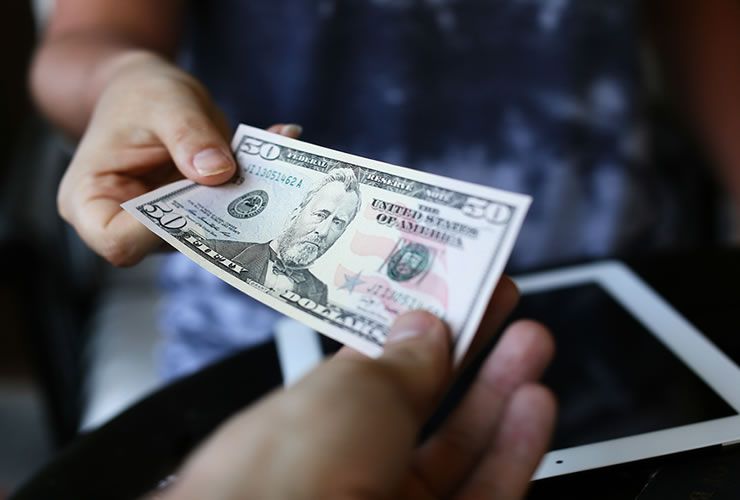Why is the US Dollar not Doing Better?

Here are some reasons why the Dollar is not doing as well as it should.
The US Dollar rose strongly on the back of good inflation and retail sales data from the United States in mid-week trade, only to give the gains back in a move that has left profressional commentators, analysts and traders lost for words.
The GBP/USD was seen struggling amidst the broader Dollar rally, but soon reclaimed lost ground on the USD retreat.
The Dollar really should be doing better if you were to listen to the views of the foreign exchange research community.
We have reported recently that the best minds in the industry have been warning traders to be ready for the next push higher by the US Dollar, see here and here.
Indeed, the backdrop is looking good for the Dollar with the recent blowout inflation and retail sales data confirming the economy will need a number of interest rate rises from the US Federal Reserve to ensure it does not overheat.
The better-than-expected retail sales data and higher consumer inflation have resulted in higher US Treasury yields and investors are pricing in a larger probability of a rate hike in March (42% vs 28% at the start of the week).
The Fed’s Chair Janet Yellen herself has not stood in the way of rising market expectations for these rates in her appearance before the US senate this week.
Meanwhile President Trump's comments have been more conciliatory especially towards Japan and China where better economic data has improved global investor sentiment which has supported the US Dollar.
However, a curious thing has happened, the Dollar is still some way off its December 2016 highs and GBP/USD is up on the year.
Yes the declines that we saw in January have stabilised and we have seen some nascent strength, but nothing like the traction required to suggest the next leg of the cyclical Dollar rally is starting up again.
Why is the Dollar Struggling to Convince?
So why is the Dollar not responding to the seductive mood-music playing in the background?
Georgette Boele, a foreign exchange analyst at ABN Amro in Amsterdam has taken a look at the Dollar’s inability to push notably higher despite the favourable backdrop.
“So far the market has been reluctant to price in the three rate hikes that the Fed has been signalling,” says Boele. “It is somewhat surprising that the US Dollar hasn’t risen more strongly.”
Boele reckons that if the US Dollar had reacted as was expected, Yellen’s comments and today’s US data would have sent EUR/USD below 1.04 and USD/JPY above 116.
Interestingly, a similar behaviour is seen in gold prices which are very reluctant to move below USD 1,220 per ounce.
What does this behaviour tell us?
“For a start, a higher US Dollar is a consensus trade and investors are already positioned for it. The net-long speculative positions are not excessive but still high. It could be that investors use any rally in the US Dollar to close their US dollar longs because they are losing conviction,” says Boele.
Second, “investors may start to become more concerned about inflation and that the Fed may be behind the curve. Therefore, their expectations are for lower real yields which is lowering the appeal of the US Dollar and increasing that of gold,” says the analyst.
Third, Boele argues investors may be concerned about the political developments in the US and thereby shying away from buying the US Dollar aggressively.
“Whatever the reason may be, this behaviour is a warning sign that the last leg of the US dollar could already be behind us,” says Boele, “this is not our central view but the risk is increasing.”
Not willing to give the Dollar the benefit of doubt are the team at UniCredit, the Italian banking giant.
Their base stance is the current USD rebound will not last long.
"More USD strength may reignite wording by the US Administration against “too strong” a currency and induce profit taking," say UniCredit in a briefing to clients dated February 16.
"Moreover, we doubt that the Fed will prove really aggressive on rates beyond the two or three hikes that are already sufficiently priced in by the forward curves and this means that real US rates are not expected to offer the USD a boost going forward, especially if inflation expectations in the US continue to rise," say UniCredit.
UniCredit believe the US Dollar will end 2017 at lower values than now, with EUR/USD pulling back up to 1.10.
The GBP/USD is forecast to end the year at 1.25.




